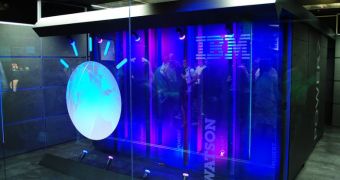Researchers and engineers at IBM announce the development of a new generation of prototype computer chips, which may very well set the foundation for the creation of intelligent machines capable of thinking for themselves. The novel devices are based on brain cell architecture.
According to the experts, their goal was to develop a machine that is capable of mimicking the functionality of the human brain. What this implies is that a computer using the new chips would be capable of collecting, processing and understanding new data just as fast as the brain does.
Thus far, getting a computer to do that has proven tremendously complex. Despite technological advancements in the field of electronics and the emergence of new materials, scientists have been unable to come any closer to their objective until now.
Constructing thinking machines is a step-by-step process. Designing a building a mammalian-scale system is one of the first things to accomplish in this direction, and this is precisely what the IBM team is aiming for with their new chips.
A mammalian-scale system is a concept that refers to the complexity of the processor used to emulate the human brain. In such a construct, experts would have to include the equivalent of 10 billion neurons and 100 trillion synapses, Daily Galaxy reports.
Each of the prototype chips includes a miniature of the human brain, and the IBM team hopes to improve their efficiency even further in coming years. In the end, billions of these chips could be linked together to form the mammalian-scale system. The next step would be recreating the brain.
“In today's computers, there are some key fundamental limitations that are projected to come to an end. The ever-increasing clock rates are unsustainable. In contrast, the brain is an ultimate computer,” IBM Research scientist Dharmendra Modha explains.
“We now have the seeds of a new architecture that can allow us to mine the boundary between the physical and the digital world in an ever more efficient way,” adds the expert, who is the leader of the new chip project at IBM Research.
The scientist reveals that the experimental chips were modeled around naturally-occurring neural systems, mimicking the structure of the brain. Rather than neurons, its operations are based on silicon circuitry and advanced algorithms.
Though Modha could not provide a time frame for when a thinking computer may be finished, she reminded that IBM and its partners are involved in the large-scale cognitive computing effort called “Systems of Neuromorphic Adaptive Plastic Scalable Electronics (SyNAPSE).”

 14 DAY TRIAL //
14 DAY TRIAL //